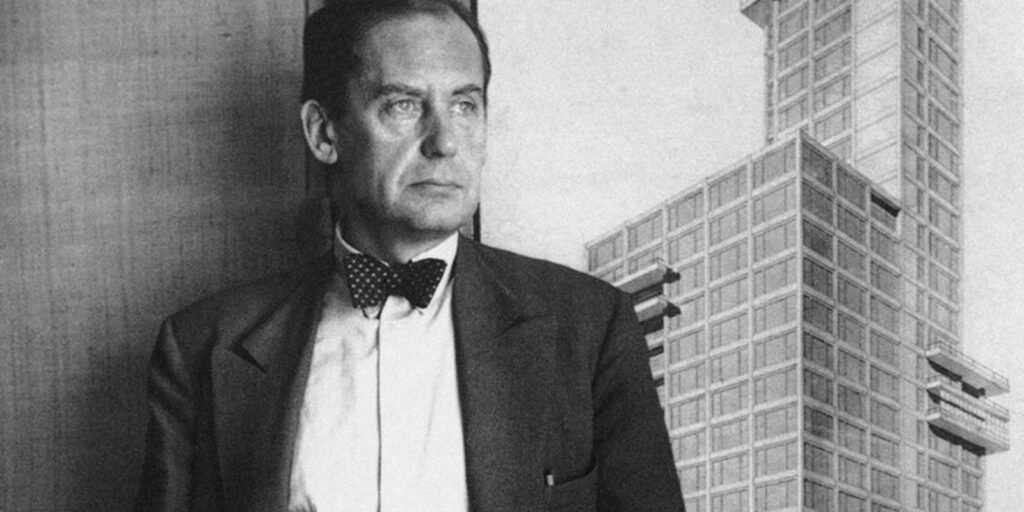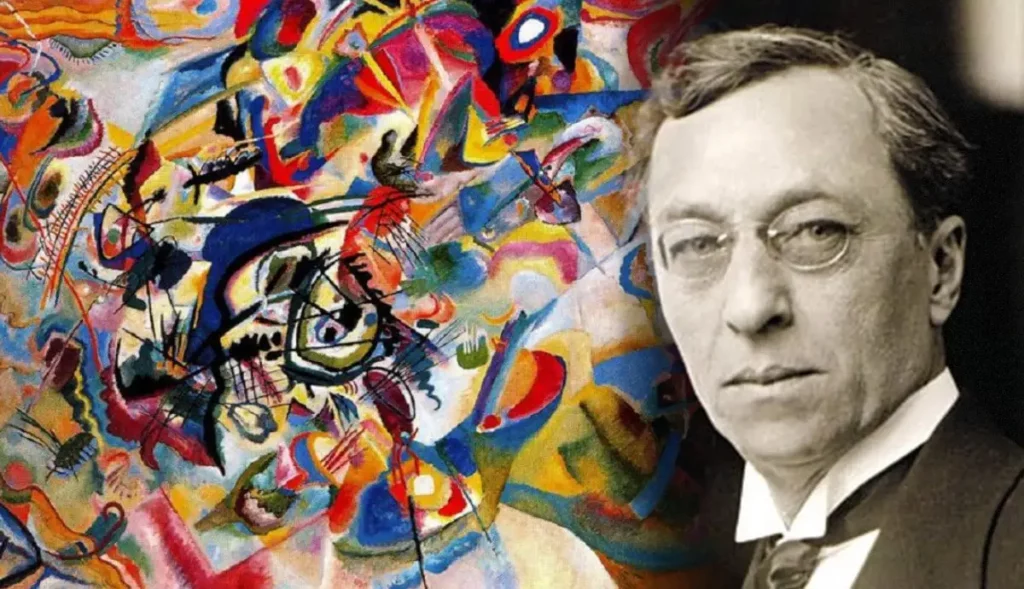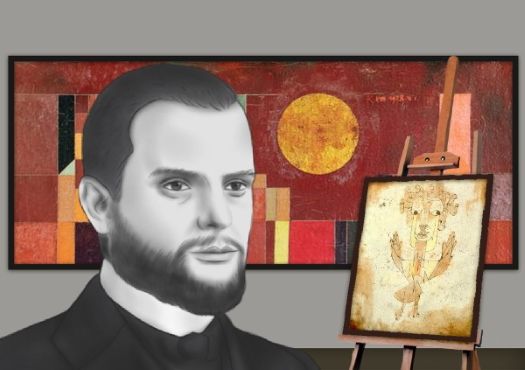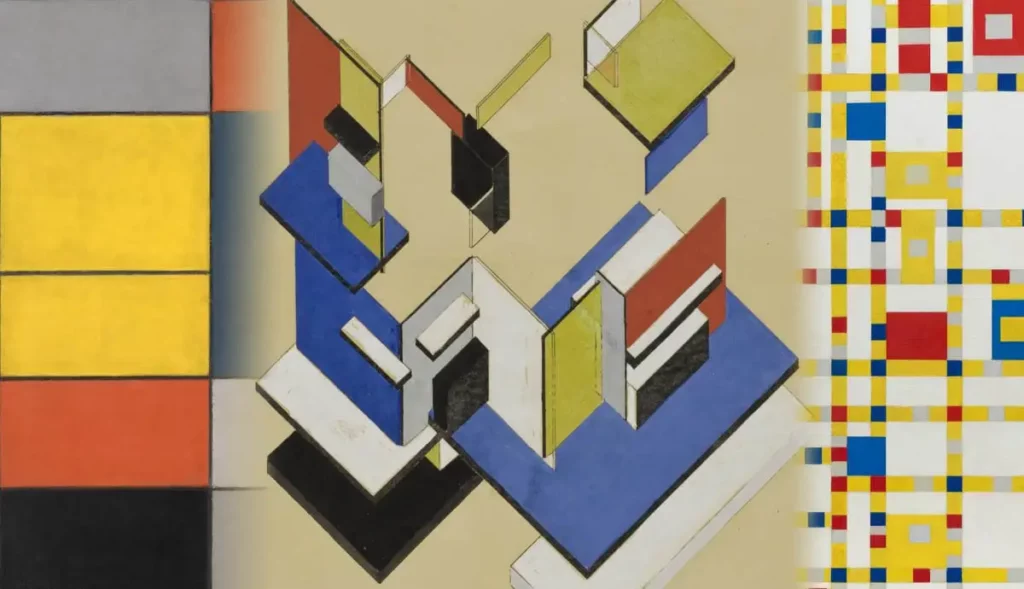
The Bauhaus School and the Modernist Movement
People living in Germany might nowadays associate the word Bauhaus with their local, popular retail stores next to Ikea. However, the Bauhaus was also an art school that played an important part in uniting art, crafts and technology in the years following the first World War. Through modern design and innovative ideas, this school’s main goal was to improve people’s living conditions. Read on to discover the unique curriculum offered to students, its prominent architecture, key figures, and artistic movements that followed the rise of Bauhaus.
Origin and principles of Bauhaus

The Bauhaus was founded in 1919 in the city of Weimar by German architect Walter Gropius (1883 – 1969), and it moved to Dessau in 1925. Its main object was a radical concept that combined crafts and the fine arts: “to reimagine the material world to reflect the unity of all the arts” (Winton, The Met). The school later became famous for its approach to design, which attempted to unify individual artistic vision with the principles of mass production and an emphasis on function.
The curriculum
The curriculum offered at Bauhaus was like none other. Gropius, in the Proclamation of the Bauhaus (1919), explained his vision for the school, as an utopian craft guild combining architecture, sculpture and painting into a single creative expression. He then developed a craft-based curriculum that later made artisans and designers capable of creating functional and beautiful objects fitting of this new system of living.

Furthermore, the curriculum commenced with a preliminary course that immersed students – who all came from different social and educational backgrounds – in a study of materials, colour theory and formal relationships in preparation for more specialised studies. This preliminary course was very often taught by prominent artists, such as Paul Klee, Vasily Kandinsky and Josef Albers.
Following the completion of this preliminary course that immersed them in Bauhaus theory, the students then entered specialised workshops, ranging from metalworking to cabinetmaking to typography and so on. However, such a strong emphasis on combining fine arts and design soon proved to be financially impractical, which led to Gropius repositioning the goals of Bauhaus in 1923, to focus on the importance of designing for mass production. He still maintained the emphasis on craft and it was around this time that the school adopted the slogan, “Art into Industry.”
Bauhaus architecture
Bauhaus architecture was rooted in the concept of functionality, and its architects championed the idea that form should follow function. This philosophy translated into minimalist design that is characterised by clean lines, geometric shapes and a deliberate absence of unnecessary ornamentation. Buildings were conceived with an utilitarian purpose, and innovative industrial materials such as steel, glass, and concrete were integrated, symbolising a break from historical architectural norms.

One of the most iconic of Bauhaus architecture is the Dessau Bauhaus building. Walter Gropius, along with students and teachers, created the Dessau University building between 1925 and 1926. Its boxy forms, extensive use of glass, and incorporation of industrial materials makes the building an icon of modern architecture and one of the most influential buildings of the 20th century. Beyond individual structures, Bauhaus architects envisioned holistic urban planning, with an emphasis on rationality and addressing societal needs. The movement’s legacy extended globally, influencing the International Style and subsequent architectural movements.
However, Bauhaus architecture not only focused on modern principles, but it also celebrated the aesthetics of machinery. The movement integrated new construction methods, including prefabrication techniques and standardised components, which reflected the technological advancements of the era. Today, architects still draw inspiration from bauhaus, adopting its principles to meet the demands of this century and contributing to an enduring legacy in the field of design and construction.
Key figures at Bauhaus
Walter Gropius

Walter Gropius was the original founder of the Bauhaus School in Weimar in 1919 and served as the school’s director until 1928, during which time he designed the iconic Dessau Bauhaus building, a masterpiece of modernist architecture. Being a pioneering German architect and educator, he sought to break down the traditional barriers between art and craft and envisioned a school where artists, architects, and craftsmen could collaborate. His tenure at the Bauhaus set the stage for the school’s emphasis on functionality, innovation, and the integration of art and technology.
Wassily Kandinsky

Wassily Kandinsky – a Russian painter and art theorist – was one of the earliest and most influential teachers at the Bauhaus. At the time, a leading figure in abstract art, Kandinsky brought an unique perspective to the school and focused on the spiritual and emotional aspects of artistic expression. His famous book, “Concerning the Spiritual in Art,” became a foundational text for Bauhaus students, influencing their understanding of the relationship between colour, form, and the human psyche.
Paul Klee

Paul Klee was a Swiss-German painter renowned for his individualistic approach to art and his keen exploration of colour theory. At the Bauhaus, Klee’s teaching focused on fostering creativity and imagination. He encouraged students to explore their unique artistic voices and experiment with different materials and techniques. Klee’s playful and whimsical works, often inspired by nature and symbolism, left an indelible mark on the artistic ethos of the Bauhaus. His influence extended beyond his paintings, shaping the way students approached the creative process.
László Moholy-Nagy

László Moholy-Nagy was a Hungarian painter, photographer and designer who brought a dynamic and forward-thinking perspective to the Bauhaus. As the director of the metal workshop, Moholy-Nagy introduced industrial materials and technology into the curriculum. He championed the integration of art with industry and saw design as a means of improving everyday life. Moholy-Nagy’s experiments with light, shadow, and photography had a profound impact on Bauhaus aesthetics. After leaving the Bauhaus, he continued to influence modern design and education in the United States.
Artistic movements
The Bauhaus school itself was already a prominent achievement, but was more so emphasised following its association with multiple art movements around the world at the time. One notable connection lies with the Constructivist movement, particularly evident in the early years of the Bauhaus. The Constructivists, active in Russia, shared similar ideals with the Bauhaus in their rejection of traditional artistic conventions and their embrace of industrial materials and technology. The exchange of ideas between the Bauhaus and Constructivism fostered a climate of experimentation and innovation, influencing the development of both movements.

Another noteworthy association is with the De Stijl movement, founded in the Netherlands. The principles of De Stijl, emphasising geometric abstraction, primary colours, and a reduction of form to essential elements, resonated with Bauhaus ideals. The works of artists like Theo van Doesburg and Piet Mondrian found common ground with the Bauhaus approach, contributing to a cross-pollination of ideas that enriched the vocabulary of modern art and design.
Lastly, the International Style, a global architectural movement that emerged in the 1920s and 1930s, absorbed and expanded upon Bauhaus principles. Architects like Le Corbusier and Mies van der Rohe, who were associated with the International Style, drew inspiration from the functionalism and rationality championed by the Bauhaus. The International Style, like Bauhaus, advocated for a break from historical ornamentation, embracing a modern aesthetic rooted in simplicity, functionality, and the use of new materials.
Bauhaus and politics

The Bauhaus was closely associated with the heated political situation and turbulent history of the Weimar Republic. The end of this Republic and the start of the Nazi dictatorship in Germany in many ways marked the end of the Bauhaus. The school was forced to move once again in 1932, as a result of political pressure, as had also been the case in Weimar in 1925. The third and last director after Hannes Meyer – architect Ludwig Mies van der Rohe – kept the Bauhaus running as a private institution until 1933 in a former telephone factory in Berlin’s Steglitz district.
On July 20, 1933, the Bauhaus was forced to close in the face of Nazi reprisals. Following this, most of the students and teachers who had been involved with possibly the most famous and influential school of modernism had to assimilate, go into hiding, or emigrate. Many former members of the Bauhaus took the ideas of the institution with them to almost every corner of the globe. Yet, because of the international links that the Bauhaus had right from the start, the emigration of its members greatly increased the school’s international status and its global influence, even until today.
Global impact and today

The Bauhaus School actively embraced international influences, permeating not only its teaching programs and architectural designs, but also the lives of its teachers and students. Walter Gropius, the founder, demonstrated a commitment to cross-cultural ideas by aligning the school with specific traditions. During the development of the teaching program, Gropius incorporated suggestions from notable English artists such as John Ruskin and William Morris. The fusion of arts and crafts, a hallmark of the movement founded by Morris, played a pivotal role in shaping the early years of the Bauhaus. This cross-cultural exchange laid the foundation for a dynamic synthesis of artistic principles, contributing to the school’s unique and influential approach to art and design education.
Today, the Bauhaus building in Dessau stands as an UNESCO World Heritage Site and it serves as a vibrant gathering place for a diverse array of individuals, interests, and global influences – much like it already did between 1926 to 1932. Both the master houses and the school building served as the epicentre where Bauhaus members transformed approaches to life, education and collaborative work. This architectural landmark not only provides insight into the Bauhaus as an educational institution but also underscores its crucial role as a pivotal node in the international network of modern art.
Sources:
- Artland Magazine. “Art Movement: Bauhaus.” Artland Magazine, 2 Apr. 2021, https://magazine.artland.com/art-movement-bauhaus/.
- Griffith Winton, Alexandra. “The Bauhaus, 1919–1933.” Metmuseum.org, Aug. 2016, www.metmuseum.org/toah/hd/bauh/hd_bauh.htm.
- Perren, Claudia. “Bauhaus: The School of Modernism.” Google Arts & Culture, https://artsandculture.google.com/story/bauhaus-the-school-of-modernism/6gIi8UW9Rfa-Kw.
- The Art Story. “De Stijl Movement Overview.” The Art Story, 2011, www.theartstory.org/movement/de-stijl/.
- —. “International Style – Overview.” The Art Story, 2017, www.theartstory.org/movement/international-style/.
- “The History of the Bauhaus – TECNOLUMEN.” Tecnolumen.com, https://tecnolumen.com/magazine/das-bauhaus.




